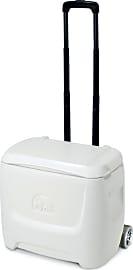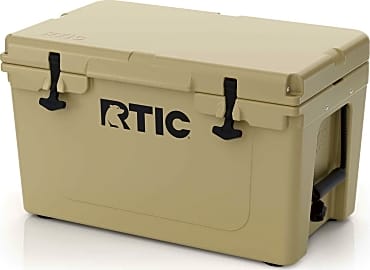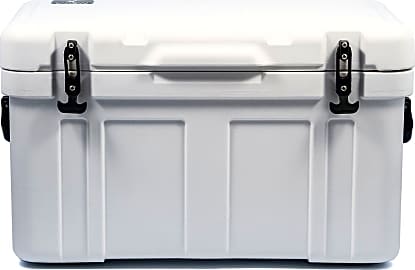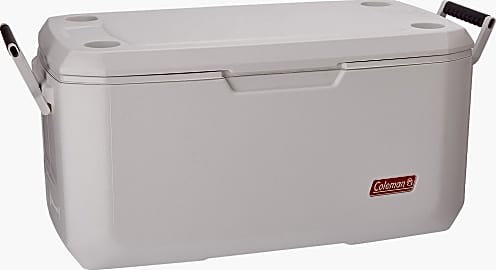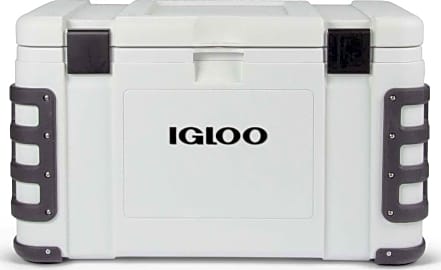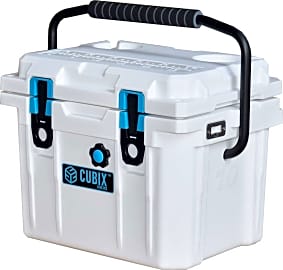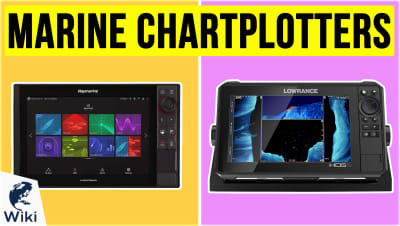The 10 Best Marine Coolers

This wiki has been updated 45 times since it was first published in August of 2015. Given the wide variety of top-performing marine coolers available today, that old one that’s been sitting in the garage for ten years just won’t cut it anymore. If you want to keep your snacks, beverages, and catch cold for days at a time, you'll need one of the models from this list. They feature thick insulation and hardware that can withstand constant exposure to saltwater. When users buy our independently chosen editorial picks, we may earn commissions to help fund the Wiki.
Editor's Notes
March 04, 2020:
Marine coolers must be able to withstand constant exposure to sun and saltwater, so they have to be built accordingly tough. This means things like rust-resistant hardware, UV-resistant materials, and of course, heavy-duty insulation to withstand warm temperatures. With that in mind, we combed through our previous recommendations to eliminate any model that wasn't specifically built and marketed for marine use, no matter how suitable they may have seemed. For example, we removed the Igloo Glide Pro because there is a potential for rust if the zinc-plating chips off its hardware, as well as the Milee Iceland, because, try as we might, we had trouble uncovering what its metal components were made of. That combined with reports of it leaking were enough to make it lose its spot.
Anyone familiar with rugged coolers won't be surprised to to see that the Yeti Tundra YT65W landed a top spot, as they have a reputation for keeping ice for up to a week, and their T-latch produces a very tight seal to keep the cold air in and hot air out. They have even been tested and proven to keep a hungry bear out for more than an hour. As to be expected though, something as rugged as this commands a top price. A brand people might be less familiar with, but which offers a very similar construction and durability as Yeti is the RTIC 45. In fact, the former even filed a lawsuit against them for making products that too closely resembled their own.
Giving both of these brands a serious run for their money is the Igloo IMX 70, which is touted as being capable of holding ice for up to eight days. Add to that injection-molded construction, which is lighter than rotomolding, a stay-open lid, and self-draining cupholders, and it is a serious competitor for one of the best options out there.
If you have a small powered watercraft or kayak though, you may be best served by the NorChill Boatbag, which is easy to stuff into tight spaces due to its soft sides, or the Cubix 10-Quart, which comes in a small size not often found in a cooler boasting this level of insulation.
Why Marine Coolers Need To Be Different Than Standard Coolers
They also aren't knocked around all day long, instead sitting firmly in one location, often on soft ground.
Are marine coolers truly any different than standard coolers? This is a common question from people shopping for a new boating cooler. After all, marine coolers can be anywhere from 50% to 100% more expensive than a similar sized standard cooler and it is natural to want to save money. While there may not be a noticeable difference at first glance, there are indeed many differences between the two that make marine coolers better suited to boating.
First consider the conditions a marine cooler is often subjected to as opposed to a standard cooler. This will help one better understand why a marine cooler needs to be built differently. Marine coolers are exposed regularly to water, sometimes fresh water, sometimes saltwater, but either way they are wet a good amount of the time. They are also generally left in direct sunlight for days at a time and subjected to hard impacts consistently as a boat plows through the waves. They are also kept on a surface that is rolling and pitching, which could result in them sliding all over the place.
On the other hand, standard camping coolers are often left in shady spot under a tree or in a tent. They rarely get wet, and if they do, they dry off quickly. They also aren't knocked around all day long, instead sitting firmly in one location, often on soft ground. Since standard coolers may need to be carried for a long period of time in order to get them to the camp location, they will need to be lighter than their marine counterparts or include wheels to make transportation easier.
Features Of Marine Coolers
Marine coolers are designed and built to withstand harsher conditions. Many make use of a denser plastic or roto-molding, which is more durable. This allows them to be knocked around on a boat as it crashes through the waves, with less chance of the bottom corners cracking. They also make soft sided marine coolers, which won't hold ice as long, but can be better for smaller boats where space can be an issue.
They also make soft sided marine coolers, which won't hold ice as long, but can be better for smaller boats where space can be an issue.
Marine coolers are also made with stainless steel hardware so they won't rust when exposed to saltwater day after day. If a standard cooler is used in a saltwater environment, the hinges will often rust and break after a relatively short period of time. Even if used in fresh water applications, it is not uncommon for the hinges on standard coolers to rust out after just a few months.
Marine coolers are also built for extended ice retention and have better insulation. They have the ability to keep ice frozen and fish cold for five days, and in some cases even longer. Some of the best marine coolers are capable of retaining ice for seven to ten days.
Generally, marine coolers are all white. This is because they are intended to be left in the sun all day long and white does the best job of reflecting the sun's heat. Reflecting light and heat can make a big difference in how long a cooler is able to retain ice. In addition, nearly every marine cooler has built-in UV protection. This helps them retain their bright white color and reduce the chance of the plastic cracking from brittleness with extended sun exposure.
Many marine coolers are also built with some kind of non-slip footing to reduce the chance of them sliding off the boat or crashing into a wall as you hit a big wave. In addition to non-slip footing, the better marine coolers will also have tie-down holes. This allows them to be securely tied down while still keeping the contents accessible.
Other features one might expect to find in a marine cooler include a cushioned top, which is ideal for center console boats that have limited seating areas, and measurements integrated into the top, so one can quickly measure their catch.
Choosing The Right Marine Cooler
The ideal cooler for your needs will depend on the type of boat and the application. If you have limited space on your boat or often crowd it full of people, a soft sided cooler might be a good choice. They can be squeezed to fit into nooks and crannies where hard coolers won't fit, plus as the contents are used, they can be further compacted to open up more space for passengers to lounge. If you are going on a multi-day trip, a soft sided cooler may not be ideal as they generally only hold ice for one or two days.
If you have limited space on your boat or often crowd it full of people, a soft sided cooler might be a good choice.
If you often go out on rough days with heaving seas, consider a roto-molded cooler. These can withstand serious impacts without cracking. They also have super durable, rust-resistant hardware and T-latches that keep the tops firmly closed in all conditions. The majority also feature self-stopping lid hinges, which prevent the lids from falling backwards, as well as non-skid feet and tie down holes.
Roto-molded marine coolers are also ideal for multi-day trips as they can hold ice anywhere from five to ten days. If you don't need the most durable cooler on the market, the cost associated with a roto-molded marine cooler may not be worth it.
There are also a number of other non roto-molded marine coolers that can hold ice for five days and are built to withstand a good amount of impact, but cost considerably less. These can be ideal for sailboats as they won't require the same level of durability, but will still need to retain ice.


